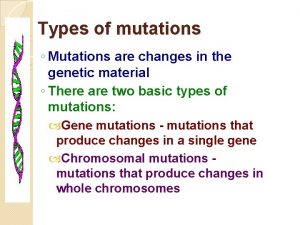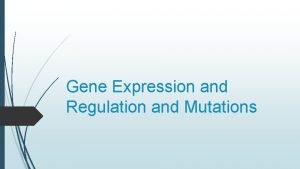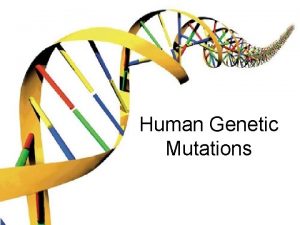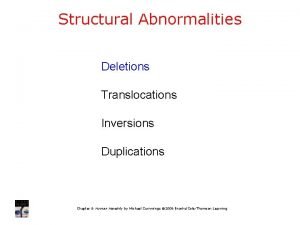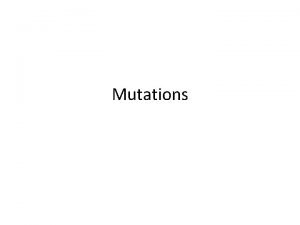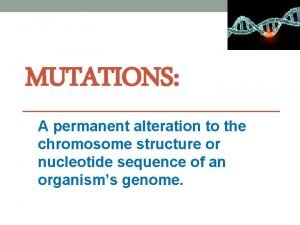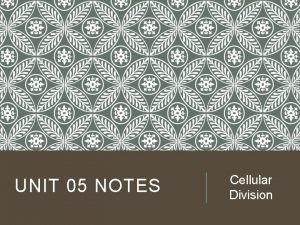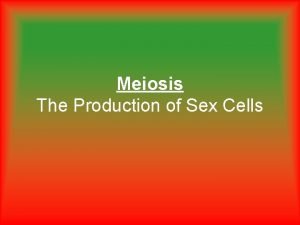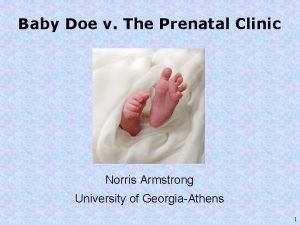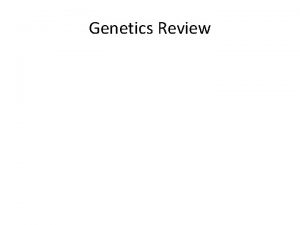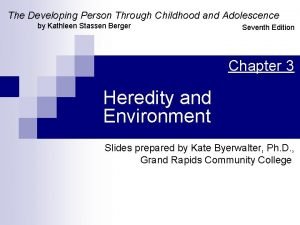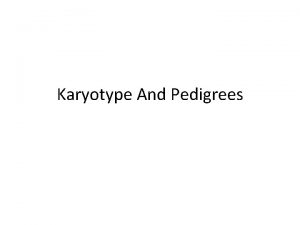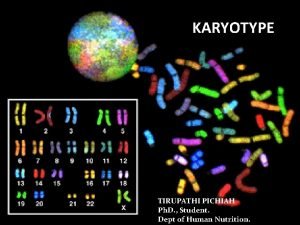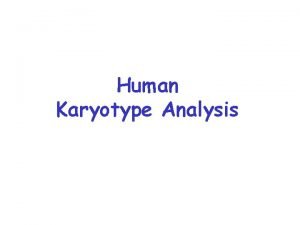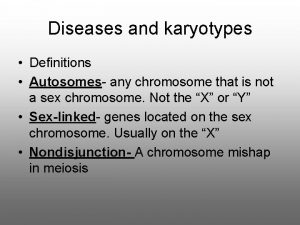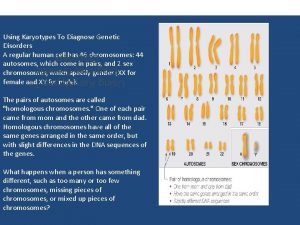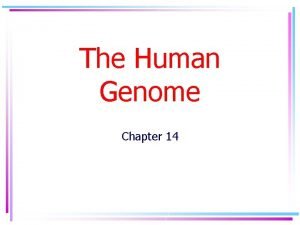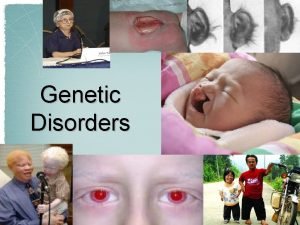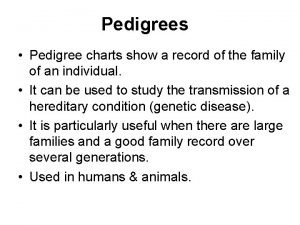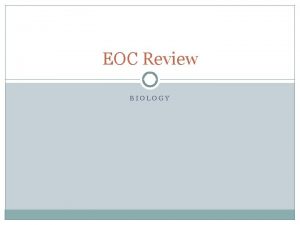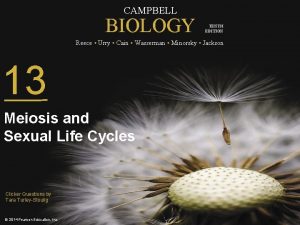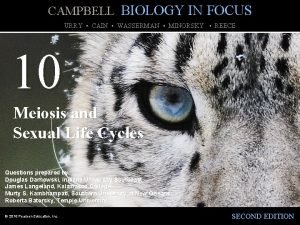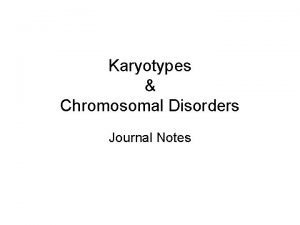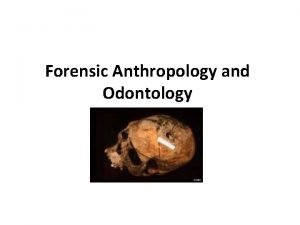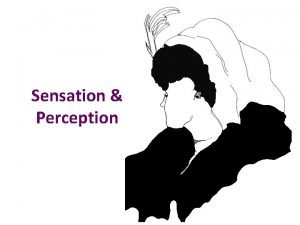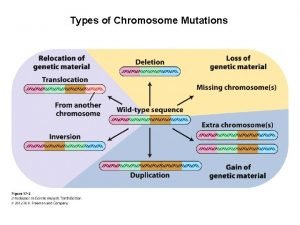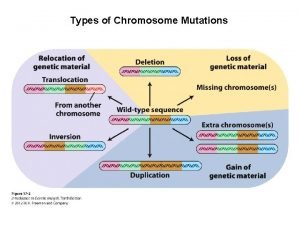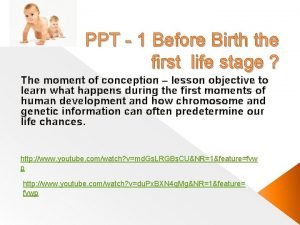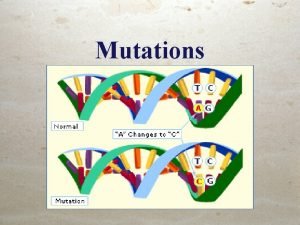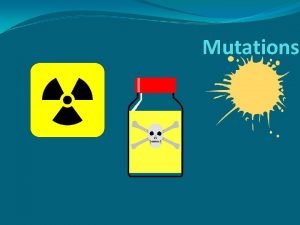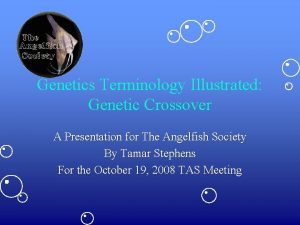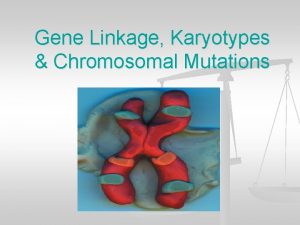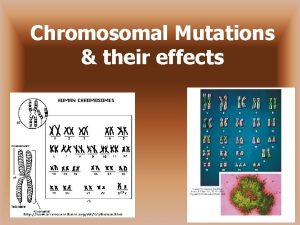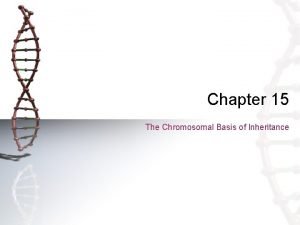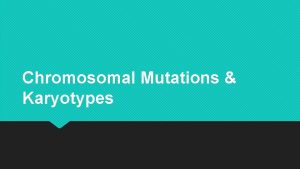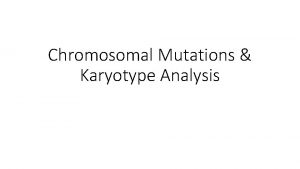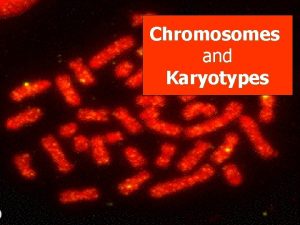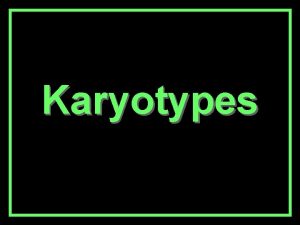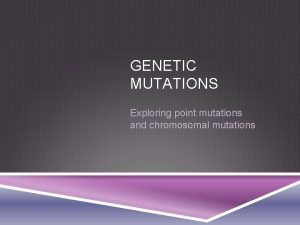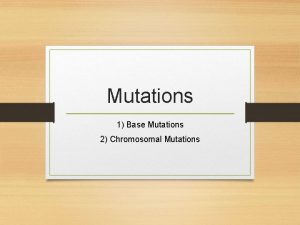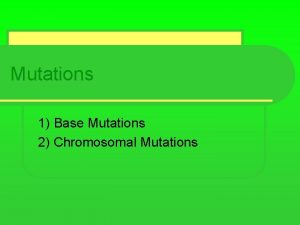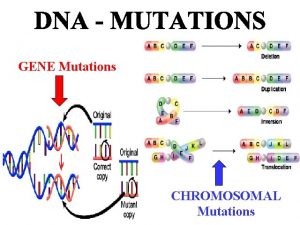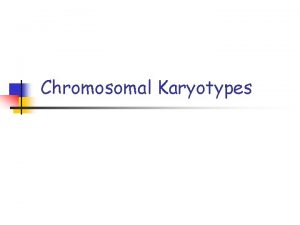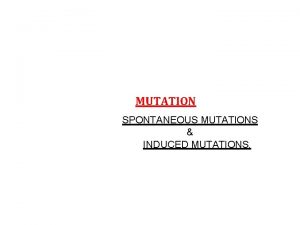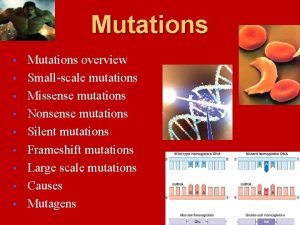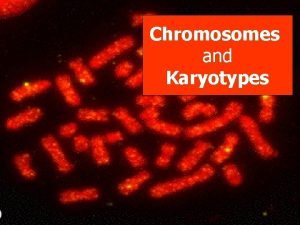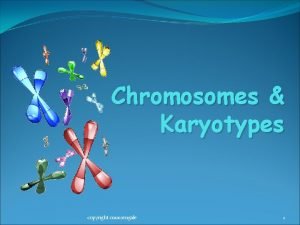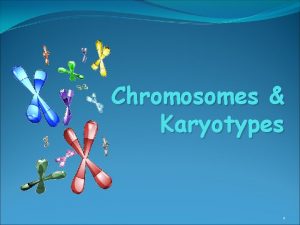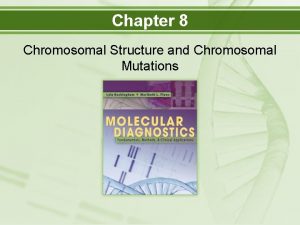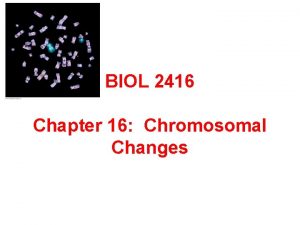Chromosomal Mutations and Karyotypes Chromosomes Humans have 46




































- Slides: 36

Chromosomal Mutations and Karyotypes

Chromosomes • Humans have 46 chromosomes (diploid =2 N) • 2 of them are sex chromosomes (the last pair) – X and Y they determine what sex you are • XX = female • XY = male • 44 of them are autosomes – they do not determine the sex of an individual.


Chromosomes Males (XY) Females (XX)

Differences among species • Each organism has a characteristic number of chromosomes • The number is constant with the species • Potatoes, plums, and chimpanzees all have 48 chromosomes

Differences among species • Oats, Raccoon Dogs, Rats, Wheat and Wolverines all have 42 chromosomes

Differences in Species • If multiple organisms can have the same number of chromosomes, why do they look so different? – The order of the DNA nucleotides found on their chromosomes determines an organism’s traits – The number of chromosomes does not determine intelligence • For example, some plants can have over 100 chromosomes—this doesn’t mean they are more intelligent than an organism with 46 chromosomes.

Karyotypes • A karyotype is a picture of an organisms chromosomes • During mitosis, a picture of a cell is taken • The chromosomes are sorted into identical pairs and arranged from biggest to smallest • The 2 sex chromosomes are put at the end (pair 23)

Karyotypes • We can determine the sex of an organism as well as determine if it has mutations or nondisjunction • Karyotypes from a somatic cell will show 2 of each chromosome since they are diploid. • Karyotypes from a gamete will show only 1 of each chromosome since they are haploid.

Karyotypes 1. What is the sex/gender of this organism? _female_ 2. How many total chromosomes? _46__ 3. How many autosomes? _44__ How many sex chromosomes? HINT: Autosomes + sex chromosomes = total _2__ chromosomes. 4. Is this from a somatic cell or gamete? _somatic___

This is an example of what a karyotype from a gamete (egg or sperm) would look like. Notice there is a haploid number of chromosomes (one of each).


Chromosomal Mutations • Mutations are changes made to an organism’s genetic material • These changes may be due to errors in DNA replication or during transcription, radiation, viruses and many other things • Mutations can occur within a specific gene (small scale) as well as to the chromosome as a whole (large scale)

Chromosomal Mutations • In protein synthesis we talked about SMALL scale mutations that involved changes in nucleotides • There also LARGE scale mutations that can change entire segments of a chromosome – Deletion – Duplication – Inversion – Translocation

Chromosomal Mutations Original Chromosome: 1 2 3 4 Deletion- when a piece of chromosome breaks off completely 1 2 3 Duplication- occurs when a segment of a chromosome is doubled 1 2 3 4

Chromosomal Mutations • Inversion- when a piece of DNA is removed from the chromosome, inverted/flipped and then placed back into the chromosome 1 3 4 • Translocation- when the chromosome piece attaches to a nonhomologous chromosome 1 2 3 4 9 2

Chromosomal Mutations


Nondisjunction • Sometimes during meiosis, the chromosomes fail to separate correctly during anaphase I or anaphase II. – This is called nondisjunction

Nondisjunction • When a gamete has only 1 copy of the affected chromosome it is called monosomy • When the other gamete has 3 copies of one chromosome it is called trisomy


Nondisjunction Common Disorders • Klinefelter’s syndrome: – One to several extra sex chromosomes • Presence of Y = MALE • Ex. XXY or XXXY


• Turner’s syndrome: – Only one sex chromosome – Absense of Y develops into female • Ex. XO



• Down Syndrome: – – Autosomal Trisomy 21 Most common birth “defect” Learning disabilities, heart defects, hypotonia, characteristic facial features


• Patau Syndrome: – – Autosomal Trisomy 13 Rarely live past infancy Neurological problems, polydactyl and facial defects


• Edwards Syndrome: – – Autosomal Trisomy 18 30% of babies die by 1 month Learning disabilities, congenital heart defects and malformations of digestive tract, urinary tract, and genitals


Practice 1 45 1. Number of autosomes ____ 2. Number of sex chromosomes 2 ____ 3. Total number of chromosomes 47 ____ Female 4. Sex of the individual ____ 5. Position (chromosome number) where disorder is 13 located _____, Monosomy / Trisomy (circle one) 6. Specific Name of disorder Pautau _____________

Practice 2 45 1. Number of autosomes ____ 2. Number of sex chromosomes 2 ____ 3. Total number of chromosomes 47 ____ male 4. Sex of the individual ____ 5. Position (chromosome number) where disorder is 21 located _____, Monosomy / Trisomy (circle one) 6. Specific Name of disorder Down syndrome _____________

Practice 3 44 1. Number of autosomes ____ 2. Number of sex chromosomes 1 ____ 3. Total number of chromosomes 45 ____ Female 4. Sex of the individual ____ 5. Position (chromosome number) where disorder is 23 located _____, Monosomy / Trisomy (circle one) 6. Specific Name of disorder Turner _____________

Practice 4 44 1. Number of autosomes ____ 2. Number of sex chromosomes 3 ____ 3. Total number of chromosomes 47 ____ male 4. Sex of the individual ____ 5. Position (chromosome number) where disorder is 23 located _____, Monosomy / Trisomy (circle one) 6. Specific Name of disorder Klinefelter’s _____________
 Syndrome triple x
Syndrome triple x Gene
Gene Point or frameshift mutation
Point or frameshift mutation Non-reciprocal translocation
Non-reciprocal translocation Chromosomal mutation
Chromosomal mutation Vertus hardiman
Vertus hardiman Karyotype
Karyotype How many chromosomes does a human have
How many chromosomes does a human have How many chromosomes do humans have
How many chromosomes do humans have How many pairs of chromosomes do humans have? *
How many pairs of chromosomes do humans have? * Chromosomal abnormalities occur when a zygote's cells have
Chromosomal abnormalities occur when a zygote's cells have The karyotypel has a turner syndrome
The karyotypel has a turner syndrome Pedigrees and karyotypes
Pedigrees and karyotypes Pedigrees and karyotypes
Pedigrees and karyotypes Different types of karyotypes
Different types of karyotypes Karyotypes of klinefelter syndrome
Karyotypes of klinefelter syndrome Karyotype of pku
Karyotype of pku Using karyotypes to diagnose genetic disorders
Using karyotypes to diagnose genetic disorders Chapter 14 the human genome making karyotypes answer key
Chapter 14 the human genome making karyotypes answer key What are some uses of analyzing karyotypes?
What are some uses of analyzing karyotypes? Pedigree diagram
Pedigree diagram Reading karyotypes
Reading karyotypes Privet shrubs and humans each have a diploid number of 46
Privet shrubs and humans each have a diploid number of 46 Privet shrubs and humans each have a diploid number of 46
Privet shrubs and humans each have a diploid number of 46 Difference between mendelian and chromosomal disorders
Difference between mendelian and chromosomal disorders Difference between male and female skeleton
Difference between male and female skeleton Absolute threshold psychology definition
Absolute threshold psychology definition Ribs anatomy
Ribs anatomy Chromosomal mutation deletion
Chromosomal mutation deletion Deletion chromosomal mutation
Deletion chromosomal mutation Williams syndrome
Williams syndrome Chromosomal mutation
Chromosomal mutation Tiki barber sickle cell
Tiki barber sickle cell Chromosomal crossover
Chromosomal crossover Chromosome mutation
Chromosome mutation Karyotype mutations
Karyotype mutations Chapter 15 the chromosomal basis of inheritance
Chapter 15 the chromosomal basis of inheritance
